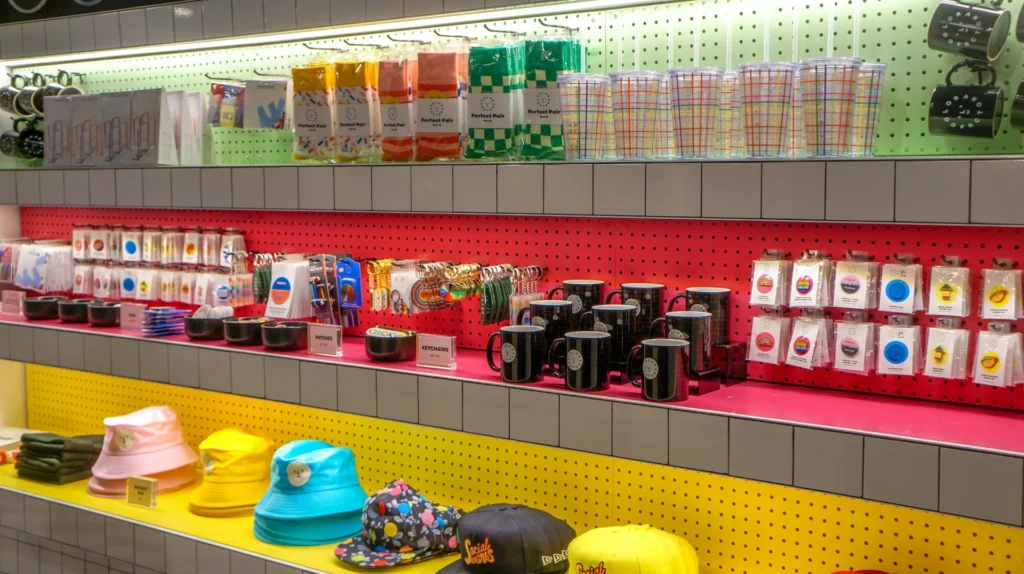The Consumer Packaged Goods (CPG) industry is evolving faster than ever, shaped by shifting consumer expectations, digital innovation, and sustainability demands. Brands must navigate changing purchasing behaviors, emerging retail models, and the growing influence of technology. Staying ahead of CPG trends is crucial for businesses looking to remain competitive in an increasingly crowded marketplace. Those that fail to adapt risk losing relevance as consumer loyalty shifts toward brands that prioritize convenience, transparency, and ethical practices. This article explores the key trends shaping the industry and the strategies needed for long-term success.
From the dominance of e-commerce and direct-to-consumer sales to the rising importance of personalization and eco-friendly initiatives, the future of CPG belongs to brands that embrace change. Data-driven decision-making, AI-powered marketing, and sustainable sourcing are no longer optional—they’re critical to growth. Companies that invest in innovation and agile strategies will be better positioned to meet consumer demands and stand out in a competitive market. Whether it’s optimizing supply chains, leveraging new digital tools, or redefining brand engagement, adaptability is key. Let’s explore the most impactful CPG trends and how businesses can capitalize on them for sustained success.
Evolving CPG Trends in the Industry
The CPG industry is undergoing rapid transformation as consumer expectations shift. At fishbat, we recognize that personalization, convenience, and sustainability are at the forefront of CPG trends. Consumers are no longer just purchasing products; they are investing in experiences that align with their values. Brands are increasingly adopting direct-to-consumer (DTC) models to strengthen customer relationships. Transparency has also become a key demand, with shoppers wanting to know how products are sourced and manufactured. Ethical sourcing and sustainable packaging are now vital components of a successful CPG digital marketing strategy.
Traditional CPG marketing and distribution models are losing their effectiveness. The reliance on mass marketing and broad retail distribution is being replaced by more targeted and agile marketing strategies. Changing demographics, rising costs, and evolving consumer expectations are driving this shift. At fishbat, we have observed that leading brands are prioritizing data-driven personalization and digital-first experiences. CPG trends indicate that brands focusing on sustainability and health-conscious offerings are gaining a competitive edge. Companies must embrace innovation to stay relevant in this evolving marketplace.
To thrive, CPG brands must continuously adapt to consumer-driven changes. The rise of e-commerce has made it easier for brands to connect directly with their audiences. Digital marketing, influencer partnerships, and AI-powered insights are reshaping traditional strategies. Consumers demand convenience and expect fast, hassle-free CPG shopping experiences. Subscription-based services and personalized recommendations are becoming standard industry practices. Embracing these CPG trends is essential for brands aiming to maintain long-term success.
Shifts in Consumer Behavior
Consumer behavior is evolving, significantly influencing the CPG industry. Online shopping has become a dominant purchasing channel, reshaping traditional retail models. Customers expect seamless digital experiences, from browsing to checkout. This shift has intensified the competition among brands to optimize their e-commerce platforms. Convenience remains a top priority, fueling the growth of subscription services and rapid delivery options. CPG trends show that consumers are favoring brands that prioritize both digital convenience and ethical business practices.
Health-conscious purchasing decisions are redefining the marketplace. More consumers are seeking natural, organic, and functional products tailored to their wellness goals. Brands that emphasize clean ingredients, transparency, and sustainability are gaining consumer trust. At fishbat, we have observed that CPG trends increasingly favor companies with strong health and wellness messaging. Brands that fail to align with these consumer priorities risk losing market relevance. Understanding these behavioral changes is crucial for staying competitive.
Consumers are also valuing brand authenticity more than ever. Social responsibility, sustainability, and ethical sourcing influence purchasing decisions. Companies that actively engage with their audience and maintain transparency build stronger loyalty. Personalization is also becoming a key differentiator, with tailored product recommendations driving engagement. Brands leveraging data-driven insights to enhance personalization are seeing higher conversion rates. Adapting to these CPG trends ensures long-term consumer engagement and business growth.
The Role of Technology in Shaping CPG Growth
Technology is a key driver of innovation in the CPG industry. AI-powered analytics are transforming how companies understand consumer behavior. By analyzing vast amounts of data, brands can predict demand and personalize marketing efforts. Supply chain optimization through AI enhances efficiency and reduces costs. Automation in manufacturing and logistics is further streamlining production and distribution.
Advancements in AI and automation are revolutionizing CPG business strategies. Smart algorithms help brands create hyper-personalized shopping experiences. Automated inventory management reduces waste and enhances profitability. Companies utilizing AI-driven insights are making data-backed decisions that improve customer engagement. CPG trends suggest that CPG businesses investing in these technologies are outperforming competitors. Virtual reality (VR) and augmented reality (AR) are also enhancing consumer interactions.
Digital innovations are redefining how consumers experience brands. Interactive AR experiences allow shoppers to visualize products before purchasing. AI-driven chatbots and virtual assistants are enhancing customer service and engagement. Blockchain technology is improving transparency in supply chains, building consumer trust. The rapid adoption of these technologies underscores the importance of staying ahead of CPG trends. Companies that embrace digital transformation are better positioned for long-term success.
Sustainability Trends Reshaping Consumer Goods
Sustainability is now a fundamental expectation rather than a niche concern. People are becoming more aware of the environmental impact of their purchases and expect brands to align with their values. This shift has fueled innovation in packaging, leading to more recyclable and biodegradable materials. Additionally, companies are setting ambitious net-zero emissions targets to address climate concerns. CPG trends indicate that businesses prioritizing sustainability are gaining a competitive edge in the marketplace.
The demand for ethical sourcing and transparency continues to grow. Consumers want assurance that raw materials are responsibly sourced and that production processes adhere to ethical labor standards. Many CPG brands are now focusing on reducing their carbon footprints across their supply chains. This includes investing in renewable energy, optimizing logistics, and implementing eco-friendly manufacturing practices. Keeping up with CPG trends in sustainability is now crucial for long-term success.
CPG companies are increasingly integrating sustainability into their core business strategies. This includes rethinking product design, minimizing waste, and adopting circular economy models. Regulatory pressures are also shaping how brands approach environmental responsibility. Governments and consumers alike are holding companies accountable for their ecological impact. Innovations in green technology and eco-conscious digital marketing are reshaping industry norms. Brands that adapt to these CPG trends will position themselves as leaders in the movement toward sustainability.

Economic Challenges Reshaping the CPG Industry
The current economic climate is significantly impacting consumer behavior and business strategies. Inflation and financial uncertainty are making consumers more price-sensitive and cautious about their spending. People are looking for affordable options without compromising on quality, leading to increased brand switching. Supply chain disruptions and rising production costs are further complicating the landscape. CPG trends show that companies must focus on operational efficiency to maintain profitability.
CPG brands are rethinking their pricing strategies to remain competitive. Promotional offers, discounts, and loyalty programs have become essential for retaining customers. Private-label brands are also gaining popularity as cost-conscious consumers seek alternatives to premium products. At the same time, businesses are finding ways to optimize production and streamline logistics to reduce expenses. Digital transformation and automation are playing a key role in enhancing efficiency. CPG consultants suggest that adaptability and strategic cost management will be key to weathering economic challenges.
Despite financial pressures, consumers still prioritize quality and value. Brands that can strike the right balance between affordability and premium experiences will stand out. Sustainable and ethically sourced products remain in demand, even amid economic downturns. CPG companies investing in resilient supply chains and flexible pricing models will have an advantage. Understanding these shifts is essential for long-term growth and stability. Aligning with emerging CPG trends will ensure that businesses stay relevant in a fluctuating economy.
Rise of E-commerce and DTC
The rise of e-commerce and direct-to-consumer (DTC) models is redefining how CPG brands engage with customers. Online shopping has become the preferred purchasing method for many consumers. CPG retail marketing is facing heightened competition from online marketplaces and subscription services. Direct brand engagement through websites and mobile apps is now essential for success. Companies adapting to these CPG trends are gaining greater control over their customer relationships.
DTC models provide brands with valuable data-driven CPG analytics into consumer behavior. Personalized marketing strategies powered by AI are helping businesses improve engagement and conversions. The ability to create tailored shopping experiences enhances brand loyalty and customer retention. Subscription-based services are also becoming more popular, offering convenience and exclusivity. Following these CPG trends ensures that companies stay ahead in the digital-first marketplace.
Supply chain agility is crucial in the shift toward e-commerce. Faster fulfillment, seamless logistics, and efficient inventory management are top priorities. Brands must invest in omnichannel strategies to provide a consistent experience across all touchpoints. Social commerce and influencer marketing are also playing a larger role in driving online sales. Companies that successfully integrate these digital advancements will thrive in the evolving market. Keeping up with CPG trends in e-commerce and DTC is essential for long-term success.
Strategies for Managing Market Disruptions
Preparing for potential market disruptions is essential. Digital transformation and advanced data analytics provide the insights needed to anticipate market shifts. Businesses that proactively invest in CPG market research and innovation can quickly adapt to emerging CPG trends. By fostering a culture of agility and continuous learning, companies can respond effectively to shifting consumer demands. Monitoring advancements in technology and changes in consumer behavior is key to staying ahead of the curve. Establishing contingency plans ensures businesses remain stable and prepared for unforeseen events.
The impact of economic fluctuations, supply chain disruptions, and evolving regulations necessitates a proactive approach. Companies must implement cost-efficient strategies while maintaining product quality and brand integrity. Investing in predictive analytics allows businesses to forecast demand and manage inventory effectively. Flexible pricing models and dynamic CPG marketing strategies can help brands maintain relevance and consumer trust. Companies that prioritize adaptability outperform their competitors during periods of market uncertainty. Incorporating CPG trends into risk management strategies ensures businesses remain resilient in the face of disruption.
Collaboration with key stakeholders is essential for mitigating challenges. Building strong relationships with suppliers, logistics providers, and technology partners enhances operational stability. Companies should leverage automation and AI-driven insights to optimize efficiency and streamline production. Diversifying sourcing and distribution channels can reduce dependency on vulnerable supply chains. Maintaining transparent communication with consumers fosters trust and loyalty even during turbulent times. Aligning with evolving CPG trends in crisis preparedness positions brands for long-term success.
Metaverse and Augmented Reality for Consumer Engagement
The metaverse and augmented reality (AR) are revolutionizing how CPG brands connect with consumers. Virtual experiences becoming a core component of brand engagement, but at the same time, a marketing challenge for CPG companies. Companies are leveraging AR to enhance product try-ons, interactive demonstrations, and virtual shopping experiences. These innovations provide consumers with a more engaging and personalized purchasing journey. Digital storefronts within the metaverse allow brands to create unique shopping environments. Embracing these CPG trends ensures companies remain at the forefront of digital transformation.
Augmented reality is redefining the in-store and online shopping experience. AR-powered apps allow customers to visualize products in real-time before making a purchase. This technology enhances convenience, reduces return rates, and improves overall customer satisfaction. Interactive advertisements and gamified brand experiences increase engagement and retention. Brands successfully use AR to create more memorable and impactful marketing campaigns. Implementing these CPG trends can differentiate businesses in a competitive market.
The metaverse offers new opportunities for community-building and brand advocacy. Virtual events, branded digital spaces, and immersive storytelling are transforming consumer relationships. Companies utilizing digital twins for product testing can streamline development and reduce costs. As technology advances, the lines between digital and physical interactions will continue to blur. Forward-thinking brands that integrate metaverse and AR experiences into their strategies will gain a strong competitive advantage. Keeping up with these CPG trends will be crucial for sustained growth and innovation.
Final Thoughts
The CPG industry is evolving at an unprecedented pace, driven by shifting consumer behaviors, technological advancements, and growing sustainability demands. Success in this dynamic landscape requires brands to embrace data-driven personalization, optimize supply chains with AI and automation, and integrate immersive digital experiences through augmented reality and the metaverse. As e-commerce and direct-to-consumer models continue to reshape the market, companies must adopt agile strategies to enhance customer engagement and operational efficiency. Sustainability and ethical sourcing are no longer optional but essential factors in building consumer trust and long-term brand loyalty.
To stay ahead, brands must also focus on building meaningful customer relationships through omnichannel marketing and seamless online-to-offline experiences. Personalized content, interactive shopping experiences, and loyalty programs foster stronger brand connections and encourage repeat purchases. Additionally, leveraging AI-powered insights helps brands anticipate consumer needs and deliver hyper-relevant recommendations. By combining digital innovation with customer-centric strategies, companies can create lasting competitive advantages in the rapidly changing CPG landscape.
Navigating the future of the CPG industry requires a blend of strategic foresight, technological savvy, and a deep understanding of consumer behavior. At fishbat, with our decade of experience as a CPG digital marketing company, we’ve witnessed the transformative power of these elements firsthand. If you’re looking to harness the power of these trends and elevate your CPG brand, don’t hesitate to reach out to our experts at fishbat. We offer free consultations to help you navigate the complexities of the digital marketplace. Contact us today at 855-347-4228 or hello@fishbat.com, and let us help you transform your vision into reality.


